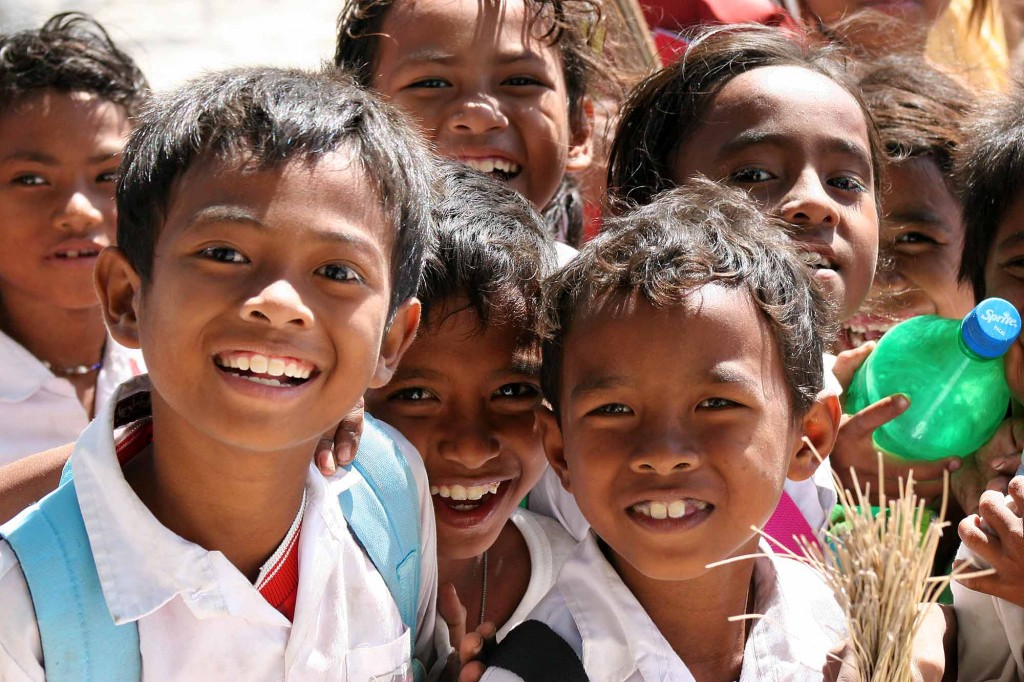Science applied to childbirth mortality in Indonesia

The Republic of Indonesia, home to more than 240 million people, is the world’s fourth most populous nation. Ethnically, culturally, and economically diverse, the Indonesian people are broadly dispersed across an archipelago of more than 13,000 islands. Rapid urbanization has given rise to one megacity (Jakarta) and 10 other major metropolitan areas. About half of Indonesians reside in rural areas of the country.
As a signatory to the United Nations Millennium Declaration, Indonesia has committed to achieving the Millennium Development Goals (MDGs). However, recent estimates suggest that Indonesia will not achieve MDG 4 (reducing by two-thirds the 1990 mortality rate for children under age five) and MDG 5 (reducing by three-quarters the 1990 maternal mortality ratio) by the target date of 2015.
Indonesia has one of the highest childbirth mortality rates in Southeast Asia. This is not surprising considering the diversity and transport problems of a large island nation. However, there are some problems specific to Indonesia that, if managed, could lead to important improvements.
• Data. Indonesia lacks a vital statistics registry. Childbirth mortality data are assembled from the census, and from surveys of small populations (using different models for extrapolation), and are not considered reliable.
• Community care system. Most births begin at home, attended by midwives and traditional birth attendants. The existing data show that most maternal deaths are attributable to conditions that often cannot be recognized in advance, and that midwives are not equipped nor trained to manage in the home.
• Hospitals and doctors. Few hospitals are certified to World Health Organization standards for comprehensive emergency childbirth care, and there is a shortage of specialists in childbirth complications.
• Strategies. Between 2007 and 2012, the number of midwives in Indonesia grew from 50,000 to 200,000. There are not sufficient births annually in Indonesia to adequately train this number, and a result has been a competition for patients among inadequately trained midwives, concentrated in the cities.
• Equity versus effectiveness. Most childbirth deaths occur in the largest, most developed provinces with the best hospitals, simply because that is where the population is. To save the most lives, efforts should be concentrated there – if equity among regions were not a consideration.
• Decentralization. Equity, however, is a serious consideration. Indonesia has adopted a decentralized system, with spending authority shifted from the central government to the close to 500 districts and small municipalities. Most women who die in childbirth are poor and uneducated, and have little political weight. Many local politicians are inexperienced, and have competing budgetary demands for education, the environment, and employment.
Poor data quality and high competition for funds made a scientific approach to this problem difficult. But in 2010, U.S. President Barack Obama’s science envoy Bruce Alberts paid a visit to Indonesia. Alberts, former president of the U.S. National Academy of Sciences (NAS), visited several communities in Indonesia, meeting with national leaders, government officials, scientists, and students to discuss the role of science in a developing country.
Alberts proposed that the NAS collaborate with the Indonesian Academy of Sciences to carry out an independent study of this long-standing problem. The U.S. Agency for International Development (USAID) agreed to support the undertaking.
A committee of distinguished scientists from the United States and Indonesia – selected for their experience and expertise with obstetrics, pediatrics, economics, midwife training, demography, vital statistics, and community health – was recruited by the two academies to conduct a consensus study.
The purpose of a consensus study is to provide the best possible evidence-based recommendations to the government on necessary actions to be taken. As it is not a research paper (the committee carries out no original research), the unavailability of high-quality data does not invalidate a consensus study. Rather, it offers the opportunity for the committee’s recommendations to include better data-collection methods.
Committee members – who are required to identify in advance possible conflicts of interest –visit sites, interview local experts and officials, meet and reach consensus. They are the authors of the consensus report and take personal responsibility for the recommendations, though a larger and equally distinguished group of scientists reviews the draft report before publication.
This committee’s report – Reducing Maternal and Neonatal Mortality in Indonesia: Saving Lives, Saving the Future – was published on December 16, 2013. It contains recommendations covering the following topics: facilities, strategies and plans, organization of the system of care, training of physicians and birth attendants, financing of health care, vital registration and data collection, community involvement, education and empowerment of women, and the role of fertility control programs.
Indonesia’s upcoming presidential election, scheduled for July 2014, will produce a new government. This report, which was neither commissioned nor acted upon by the departing government, should be placed in the hands of the new government and given high priority.
– written by Michael P. Greene, provided to BBJ by The Mark News
Michael P. Greene, a physicist and scholar at the National Academy of Sciences, was study director of the report Reducing Maternal and Neonatal Mortality in Indonesia: Saving Lives, Saving the Future. The opinions expressed in this article are solely those of the author and do not represent the positions of the study committee or the National Academies.
SUPPORT THE BUDAPEST BUSINESS JOURNAL
Producing journalism that is worthy of the name is a costly business. For 27 years, the publishers, editors and reporters of the Budapest Business Journal have striven to bring you business news that works, information that you can trust, that is factual, accurate and presented without fear or favor.
Newspaper organizations across the globe have struggled to find a business model that allows them to continue to excel, without compromising their ability to perform. Most recently, some have experimented with the idea of involving their most important stakeholders, their readers.
We would like to offer that same opportunity to our readers. We would like to invite you to help us deliver the quality business journalism you require. Hit our Support the BBJ button and you can choose the how much and how often you send us your contributions.









